
When we designed the house we were thinking about to put solar panels on the roof of the house. We later changed our mind and set up a solar station on the ground for several reasons. Firstly because we have enough space on the ground and full access to the sun throughout the day. One more reason is the accessibility and easier maintenance of the solar panels. Another reason is better cooling to avoid excessive heating of the panels by the sun. On the roof there is not much space for wind cooling between a panel and the roof. On the ground, under the panels, we have about 1.6 meters of free space for wind cooling. Solar panels produce less energy in a hot environment. This loss can be up to -25% of the rated power (Wp). The reason is that according to the specification, the rated power in Wp is tested at a temperature of 25 degrees, which is the standard test condition. In Thailand, the panels can reach very high temperatures in the midday sun due to a very high UV index. Last but not least! Whether the installation is profitable in terms of investment and the savings per kWh due to free solar energy in Thailand is a question that we put aside. The use of clean energy is more important to us. See also the solar roof system we designed for friends.

The solar station will be built on the property in a place where we will have sun all day long, but at the same time in an open environment to allow cooling winds to pass freely. The UV index in Thailand is extremely high, averaging between 11 and 12. Heating by UV radiation must be avoided as much as possible.


We dig a trench from the solar station to the house where the inverter will be placed.


The piping in the trench is done, we use two pipes: one for DC plus (red wire) and one for DC minus (black wire).

The solar station is waiting for the installation of the solar modules.

The 340Wp (JY340P72) solar modules are waiting in the store to be transported to our location.
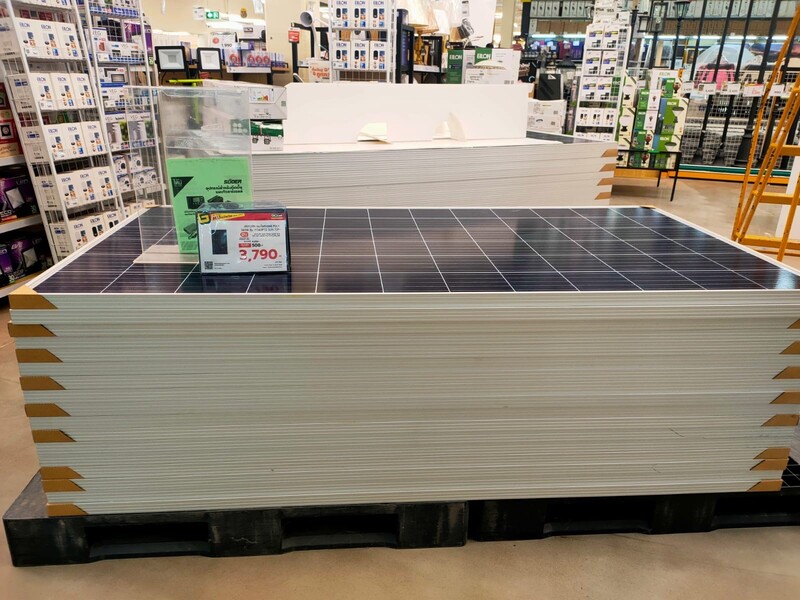
We will use nine, serial connected Jinyuan solar modules JY340P72 having a Wp of 340 Watt each panel.

The panels have been delivered and installed on the solar station, grounding and lightning arresters is the next step to be installed.
This inverter is approved by PEA (#112 on the latest approval list).
We use an INVT MG3KTL inverter (German technology) with a capacity of 3000 Watt. To prevent overheating in our warm climate, the inverter is installed under the house in a sun-protected and dry place. We also ensure good ventilation because the inverter may derate at +45°C.
Resuming the state of affairs to date:
To finally put the solar installation into production, a few steps are required in consultation with the PEA (Provincial Electricity Authority). A good start is our inverter, the MG3KTL, which can be found on the list of approximately 390 inverters approved by PEA. In the meantime, the supporting structure of the solar panels has been approved by the local government.
PEA came to take a look at the solar station and as a result they replaced their former standard kWh meter with a Gunkul "AC, 1 phase, 2 wire, static energy meter". The meter uses 2 measuring circuits, one for kWh (Kilowatt/hour) and the second for kVArh (Kilovolt Ampere reactive/hour). The display shows 2 kWh values (we think the amount of energy supplied to us and the amount of energy supplied to the electricity grid by our solar panels). An explanation of how the meter works is unfortunately lacking.
We came across a video in Thai language on the internet that provides some explanation about the codes at the top left of the display. 000 means the operator of the power grid (PEA). 300 means the supplier (we) of energy to the grid.
It turns out PEA doesn't even mention the return of 103 kWh on the electricity bill. If they pay us to return energie, it's actually only 206 Bath. The good thing is our calculations show we use 50% solar power and 50% PEA power.
The 50% of PEA is easy to explain, it consists mainly of energy consumption when the sun is low in the morning or evening. We use it to pump water to the plants in the morning and for airconditioning at night. Airconditioning at night is necessary as temperatures at this time are around 40 degrees during the day and around 31 degrees at night.
Now the difference between an on-grid and off-grid solar system can be explained as follows: Our situation: We deliver (or rather store) our excess energy that we don't use during the day when the sun is shining for free into the PEA power grid. At night when there is no sun, we ask for the energy stored during the day back and PEA delivers this energy back at a current rate of around 4 baht / kWh. In our situation, our savings lie in the fact that with an on-grid solar system we have no costs for maintenance and investment in batteries (battery storage) that we would have with an off-grid solar system. This explains the difference between on-grid and off-grid.
We are now preparing for a future wind turbine that will provide us with energy at night.
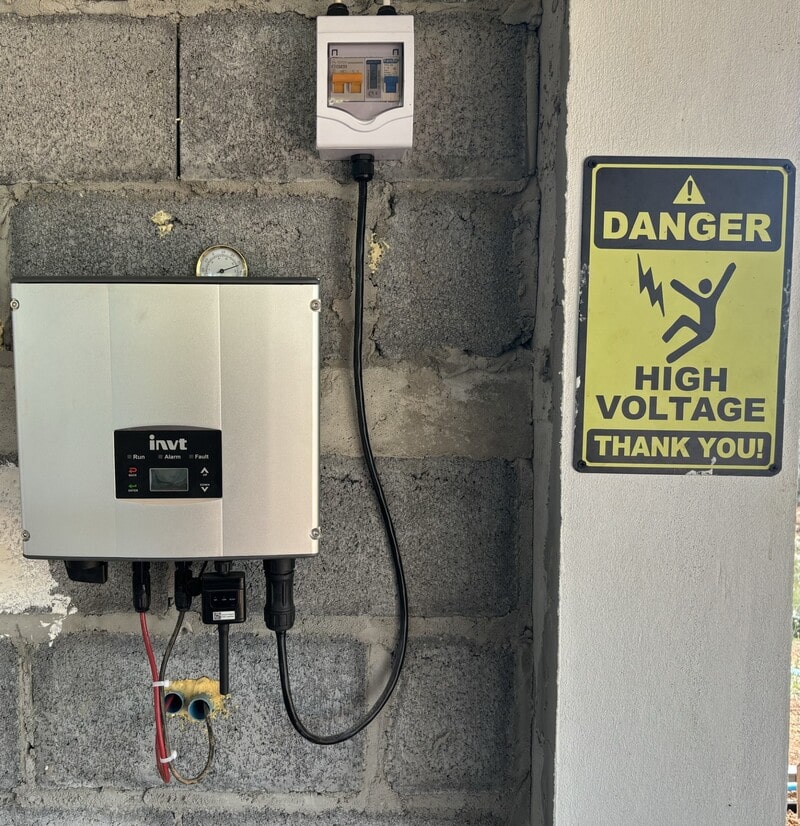
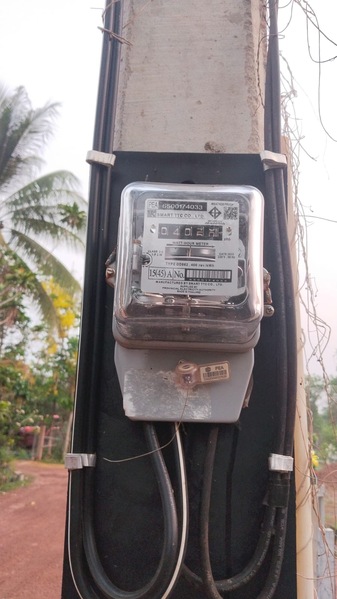
The former standard kWh meter
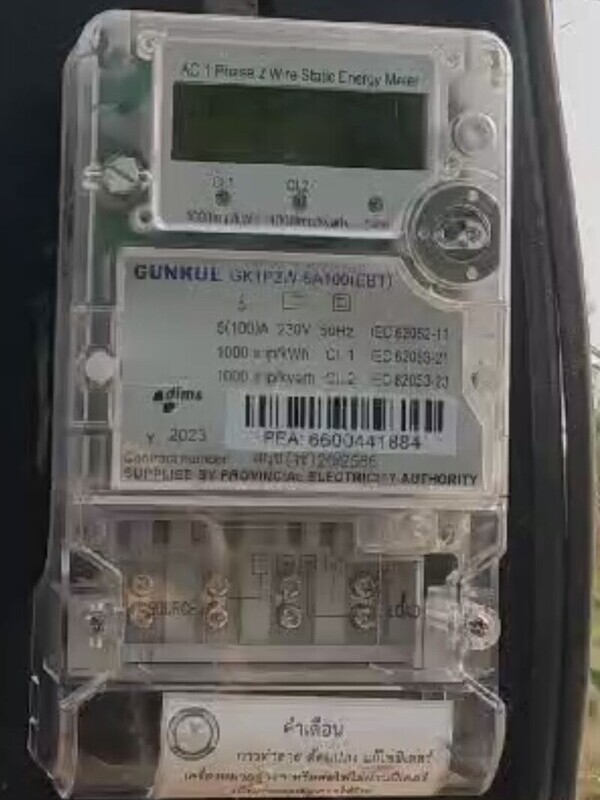
The exchanged static energy meter
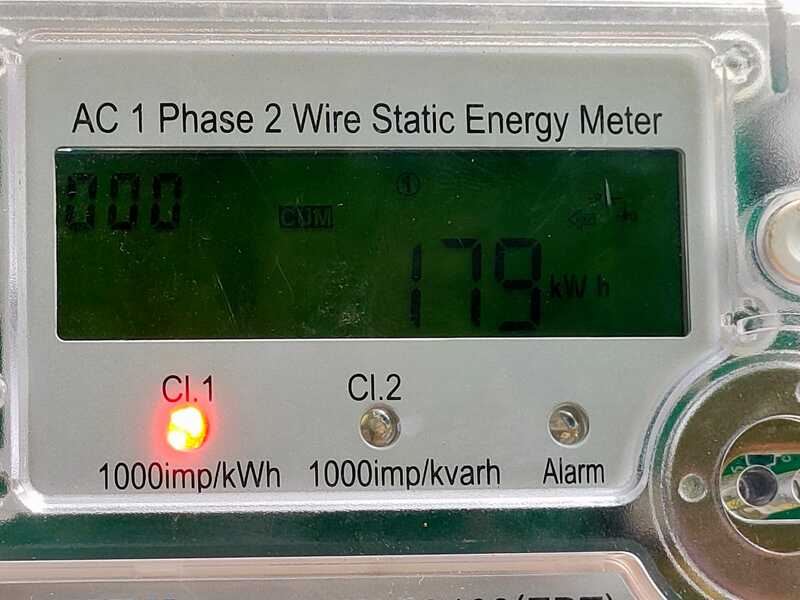
Display of the exchanged static energy meter
Pdf of the computer calculation for solar energy of our solar power plant, using the software: PVGIS ©European Union, 2001-2024.
The path changes throughout the year, around two dates the sun path reverses its direction and starts moving again. The screenshots from hinode.pics below show the change of the sun path on January first and on June first. The real direction change takes place around day 21 of January and June. This sun path check is to avoid unexpected shadow on the panels by obstacles on the location.

Sun path on January first
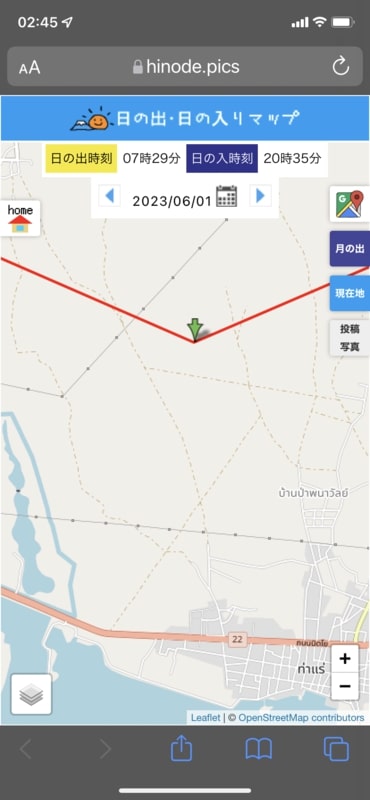
Sun path on June first

Solar connector with Plus and Minus plug
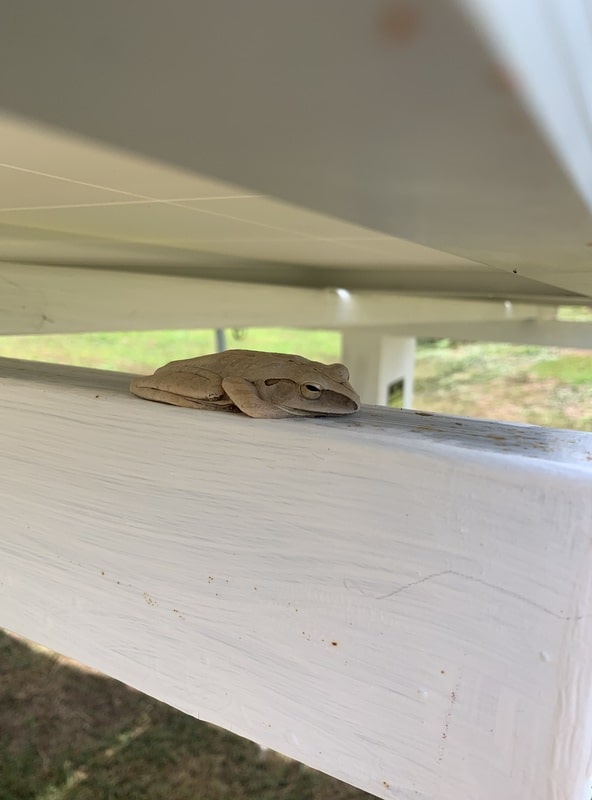
Someone (a tree frog) found a new home under our solar panels
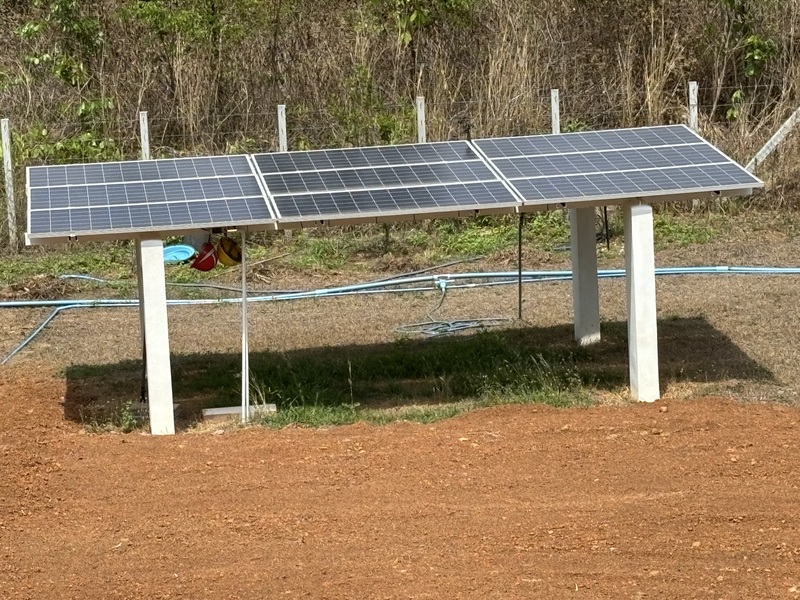
According to this photo, the constellation of the solar station relative to the sun at noon in march does not seem disappointing. The shadow of the solar station is almost exactly under the solar station.
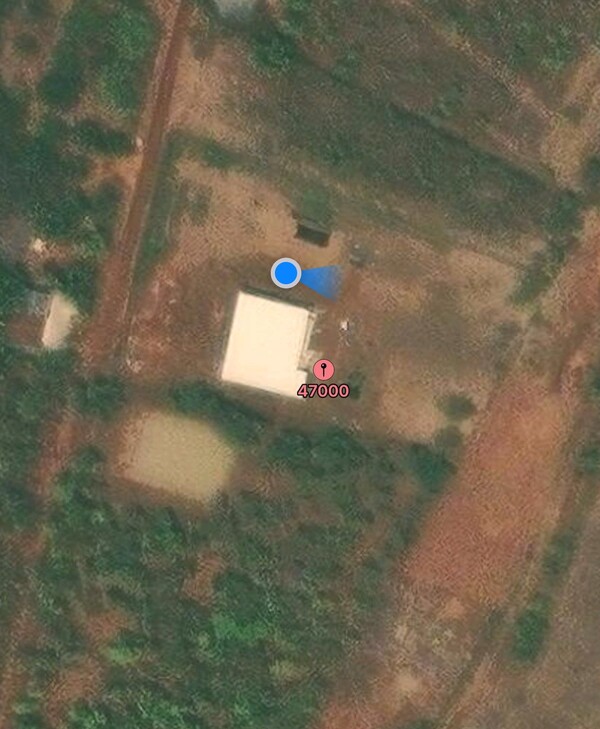
Finally after waiting a long time our house appears on maps satellite images. Not on Google maps but on Apple maps. Unfortunately, at the moment November 2024, Google still shows ancient satellite images. dating back to 2020.
Some time ago, Leefmilieu Brussel listed the facts that influence the production of solar energy (downloadable as PDF dutch only). The dutch: PDF version. A translated English web version Solar energy facts that influence energy production is available. There are also references to free software for computer models regarding solar energy. A good basis for preliminary calculations of an optimal solar installation.
Today the first parts for our new energy project arrived: Wind energy. Read more about our Wind energy project
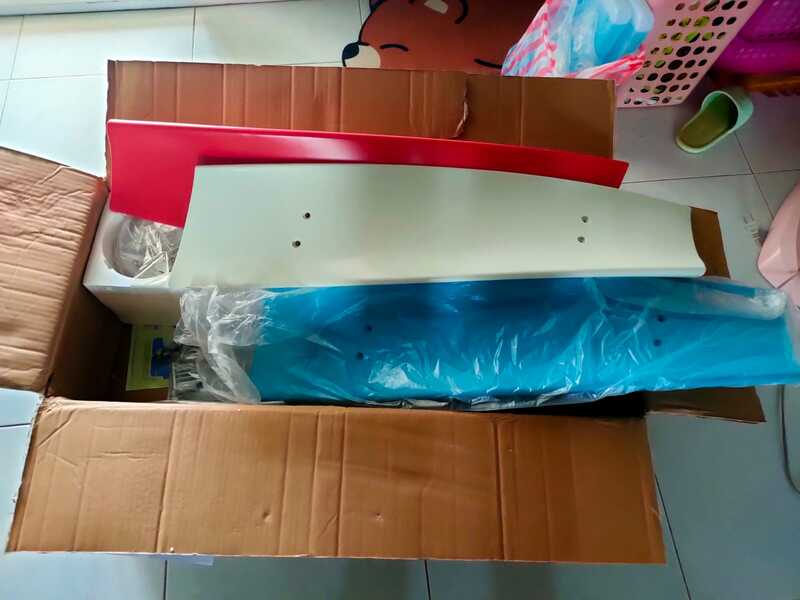
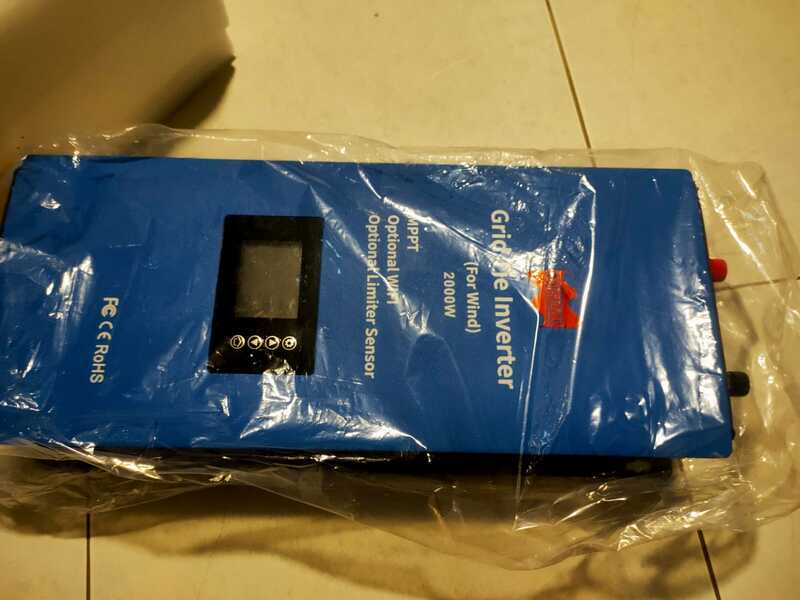
Thailand pictures and videos can be used and shared with others if the originated page is credited. For credit use this link: ThaiHome.pics Thank you! | Q&A
Content last change: November 21 2024